- News
- Reviews
- Bikes
- Accessories
- Accessories - misc
- Computer mounts
- Bags
- Bar ends
- Bike bags & cases
- Bottle cages
- Bottles
- Cameras
- Car racks
- Child seats
- Computers
- Glasses
- GPS units
- Helmets
- Lights - front
- Lights - rear
- Lights - sets
- Locks
- Mirrors
- Mudguards
- Racks
- Pumps & CO2 inflators
- Puncture kits
- Reflectives
- Smart watches
- Stands and racks
- Trailers
- Clothing
- Components
- Bar tape & grips
- Bottom brackets
- Brake & gear cables
- Brake & STI levers
- Brake pads & spares
- Brakes
- Cassettes & freewheels
- Chains
- Chainsets & chainrings
- Derailleurs - front
- Derailleurs - rear
- Forks
- Gear levers & shifters
- Groupsets
- Handlebars & extensions
- Headsets
- Hubs
- Inner tubes
- Pedals
- Quick releases & skewers
- Saddles
- Seatposts
- Stems
- Wheels
- Tyres
- Health, fitness and nutrition
- Tools and workshop
- Miscellaneous
- Cross country mountain bikes
- Tubeless valves
- Buyers Guides
- Features
- Forum
- Recommends
- Podcast
review
£2,800.00
VERDICT:
Fantastic handling and performance and stunning paint job, but let down by weight and spec
Weight:
8,200g
Contact:
At road.cc every product is thoroughly tested for as long as it takes to get a proper insight into how well it works. Our reviewers are experienced cyclists that we trust to be objective. While we strive to ensure that opinions expressed are backed up by facts, reviews are by their nature an informed opinion, not a definitive verdict. We don't intentionally try to break anything (except locks) but we do try to look for weak points in any design. The overall score is not just an average of the other scores: it reflects both a product's function and value – with value determined by how a product compares with items of similar spec, quality, and price.
What the road.cc scores meanGood scores are more common than bad, because fortunately good products are more common than bad.
- Exceptional
- Excellent
- Very Good
- Good
- Quite good
- Average
- Not so good
- Poor
- Bad
- Appalling
Pinpoint accuracy, superfast and absolutely stunning to look at, the Specialized Crux Elite is a highly capable cyclo-cross race bike, but there are better-specced bikes for the money.
- Pros: Looks great, rides great, good details, fast and comfortable
- Cons: Spec compared to rivals, could be lighter
What's it like to ride?
The handling and steering are extremely well calibrated for the demands of cyclo-cross racing. The steering is pinpoint accurate when you focus on the apex of a corner, with not a hint of hesitation. It goes precisely where you want it to. It's not reluctant to turn in harder and tighter when you're racing hard and fast and pushing your limits.
> Find your nearest dealer here
The race focus can be felt when putting the Crux through its paces on a tight and winding cyclo-cross course (is there any other type?); it's really responsive when you're getting on the power out of slow corners and chasing fellow racers. It might not be the lightest bike at this price but that doesn't dent its ability to carry great speed through fast sections, and it's easy to throw over your shoulder when you have to leg it over some hurdles.
Composure and compliance over rough ground is good. Cyclo-cross racing is never going to be a comfortable experience, but the Crux manages to provide an acceptably smooth ride over the roughest school playing fields and rutted paths, though there's no getting away from the diminutive air volume between you and the ground.
With such narrow tyres, you'll find the limits of traction if you push it hard but the Tracer tyres and the handling of the Crux ensure that when you find those limits it's all as controllable as possible, with nicely executed drifts possible if you're happy to explore the limits. Swapping tyres is an obvious way to increase the traction, and I'd have preferred to see Specialized's Terra tyres as they have a much deeper tread pattern and are better suited to typical UK winter conditions.
I really can't find fault with the geometry of the Crux for cyclo-cross racing. There's adequate pedal clearance but it's not as lofty as some 'cross race bikes I've ridden in the past, so you don't feel unduly perched over the top of the bars.
What's it like away from the barriers, tape and lactic acid of a cyclo-cross race? Even though it's not designed for much more than racing, it's clear many customers will want to use it for much more than that. For riding my local 'gravel' test loops with a wide variety of terrain, the Crux is right at home. The front is sharp with precise steering and the back end doesn't pummel you.
I also used the Crux, with 35mm WTB Cross Boss tyres, for this year's 3 Peaks CX race. It was my first time at this fabled and legendary race, and it was quite the experience. Brutal, hardcore and bonkers – you can watch my video account of the race here.
For that race the Crux was a great choice as it copes with demanding and challenging terrain well, the handling surefooted and stable at higher speeds; even when I was tired it wasn't skittish, and frame compliance took the edge off the hardest Yorkshire rocks. Don't get me wrong, it was hard as nails – a mountain bike would have been a lot more suitable.
Frame
The Crux was introduced in 2010 as a replacement for the ahead-of-its-time Tricross. Last year, the Crux received quite a big update: new and lighter carbon frames, more race focus, and modern disc brake standards fully embraced.
You have a choice of carbon or aluminium frames. Our test bike has a FACT 11r carbon fibre frame and it's disc brake-specific – there are now no rim brake options. The discs are flat mount and 12mm thru-axles secure the wheels in the frame with flush-fitting axles that give the bike a clean appearance.
Since you won't be doing any quick wheel changes in a 'cross race, the absence of levers is no biggie. In case you're wondering, the latest Crux now uses a 142mm-wide rear axle rather than the SCS 135mm of a few years ago.
You're getting the same carbon frame and fork as used right across the range, no downgrading of carbon on the cheaper models as is often the case. It's a smartly designed frame. Full internal cable and brake hose routing keeps the lines clean and cables away from mud. There's no front mech mount but you could fit a clamp-on front mech if you wanted, and there's a spare cable port on the down tube, which is just ugly on this 1x specced bike.
Like the Specialized Tarmac, the Crux employs the company's Rider-First Engineering. It's Specialized's attempt to tune the frame for each frame size, so the layup and tube shapes are refined across the size range to account for the requirements of different height and weight cyclists. It means this 56cm frame has a different layup to the smallest and biggest sizes.
And like the Tarmac, the seat clamp is integrated into the top tube. It's a little fiddly to access, as all internal clamps tend to be, but I had no issues with slippage with the bolt correctly tightened. Putting the clamp inside the frame in this way provides 20mm more seatpost extension and therefore more deflection for the carbon fibre seatpost.
Down below, there's Specialized's own OSBB press-fit bottom bracket (a narrower version of PressFit 30) and the head tube is tapered. Frame weight is a claimed 900g and the fork adds 400g. That gives the potential for a nice light build – lighter than the 8.2kg of this test bike.
As we're starting to see with other cyclo-cross bikes, the Crux is completely and utterly race-focused. Yes, there are two bottle cage mounts, but there's nowhere to fit a rack or mudguards. For that sort of versatility (which cyclo-cross bikes used to be bought for), there are now the latest gravel and adventure bikes, such as the Specialized Diverge, which are far better suited to a wider range of uses and take much wider tyres.
Tyre clearance here is pegged at 38mm, with ample space around the UCI-legal 33mm tyres fitted as standard. To test the limits of clearance, I swapped in some 40mm tyres and there was enough space to allow the wheels to rotate freely but at the rear it was tight, with about 2mm of clearance either side. That might be enough to tempt you, but really if you're looking at the Crux with a view to fitting some 40mm tyres, you'd be better off with the Diverge, especially if you want a bike for swapping from tarmac to dirt.
The geometry of the Crux is race-focused too, and this is an area where my riding highlights that Specialized has got the numbers and angles just right. Compared to the previous version, the new bike has a 4mm longer top tube and 1mm more fork rake, the former giving a racier fit and the latter increasing the trail (how far the tyre patch trails behind the steering axis) for increased stability. Otherwise, the numbers are the same, so a 72-degree head angle, 69mm bottom bracket, 425mm chainstays and a long 1,026mm wheelbase on this 56cm bike.
It's a good looking frame, and not just because of the rad paint job. There's a lovely smoothness to the tube profiles and the way they merge into each of the key junctions, and this smoothness ensures mud can clear easily and not cling to the frame. There's no seatstay bridge to help in this regard, and the S-Works model goes a step further with hydrophobic paint.
The top tube is flattened to provide more comfortable shouldering, which does make a difference for long stints of portaging such as in the 3 Peaks. The top tube isn't as distinctively bowed as it used to be, but isn't to the detriment of shouldering. A metal scratch guard on the chainstay protects the frame against dropped chains.
My only small gripe is that, considering Specialized is only offering 1x builds, it's still compatible with 2x with an ugly redundant cable port on the down tube.
Specialized has been stunning the cycling community with its flash and bold paint jobs and designs in recent years, and the Crux line is perhaps where its designers are allowed complete freedom to experiment. The pink fade might not be to everyone's taste, but it was almost universally well received by everyone who clapped eyes on it. I had more comments riding this bike than any other bike I can recall testing.
Build
The Crux is available in four builds and a frameset, including one aluminium model. Of the three carbon models, this £2,800 Crux Elite is the most affordable. It's equipped with SRAM Rival 1, a common sight on cyclo-cross and gravel bikes at or around this price. And it works very well, with easy gear shifts even in the heat of a race and solid brakes, and no dropped chains at all.
Specialized has been speccing Praxis chainsets for a number of years and does so on this bike. It's a solid and dependable choice with the Wave Ring narrow/wide chainring design ensuring complete chain retention. The 40t chainring combines well with the 11-32t cassette to provide, in my case, all the gears needed for a typical cyclo-cross race course.
They're not flash, but the DT Swiss R470 wheels with their strong and light aluminium rims have been dependable and robust, with no issues during several months of hard racing and riding, including the brutal 3 Peaks CX race. They're tubeless-ready, with rim strips installed, and setting up the Specialized Tracer tyres tubeless was a complete and utter doddle.
These tyres have a low-profile, closely packed tread pattern that is well suited to riding on hardpack trails and in dry conditions. They're a good all-round tyre, and the raised shoulder knobs and Gripton compound combine to provide reasonable traction on loose and damp ground, though I'd prefer a more aggressive tread pattern with taller blocks for more bite. Like Specialized's Terra Pro tyre, in fact.
While it's not the most generously specced bike for the price, Specialized goes some way to redeeming itself with the quality of the finishing kit. The Phenom saddle is a top quality Body Geometry design that I found utterly comfortable, with sufficient padding for racing over rough ground.
An aluminium handlebar is a sensible choice for a bike that is likely to enjoy some rough and tumble, and it's a short reach with compact drops. The bar tape is nicely grippy without gloves, and lightly padded.
The aluminium stem goes about its business and was a suitable length for me – I like to keep the reach a little shorter on cyclo-cross bikes for increased control in the corners.
Value for money
The Crux is an expensive proposition. SRAM Rival on a bike nudging £3k does feel a bit steep, something that's confirmed when you start to shop around – especially if you don't mind buying online.
For example, you'll find the Vitus Energie CRX with a SRAM Force groupset for £1,899; that's seriously impressive. You also get decent WTB Cross Boss 35mm tyres on tubeless-ready wheels, so it's not skimping on details. I haven't ridden this bike, but we do have one in for test so we'll let you know.
A bike I did race last year is the Canyon Inflite CF SLX. For £2,699 the Inflite CF SL 8.0 Race, which uses slightly lower grade carbon than the top-flight model I tested, is also specced with a SRAM Force groupset including a Quarq power-ready crankset, Reynolds AR 41C carbon fibre wheels, race-ready Schwalbe X-One tyres and a one-piece carbon handlebar and stem. The claimed 7.7kg weight seriously undercuts the Crux.
> Beginner's guide to cyclo-cross essentials
Or there's the Canyon Inflite CF SL 7.0 Race, with SRAM Rival 1 and DT Swiss aluminium wheels at £1,799.
The two business models are very different – buying direct versus through a dealer network – but that is a huge difference. It's worth remembering that the CF SL isn't the highest grade carbon and lightest Inflite frame, and at 1,050g it's quite a bit heavier than the Crux's 900g claimed weight.
Over to another popular cyclo-cross bike on the world cup circuit, the Trek Boone with its front and rear IsoSpeed decoupler borrowed from the Trek Domane endurance bike. The closest in terms of price is the £2,500 Boone 5 Disc which has a carbon fibre frame with a SRAM Rival 1 groupset and a claimed 8.39kg weight. Again, it's a bike I haven't tested – soon to be rectified, hopefully, when Trek sends me one to ride...
> Buyer's Guide: 12 of the best cyclo-cross bikes
None of those rivals looks as smart as the Crux, though. What price to put on a stunning paint job? True, the Crux is pretty woefully specced compared with other similarly priced or even, in the case of the Vitus, hugely cheaper rivals, but the components are just one aspect of the overall package, and other than the weight they don't dent the performance which really shines through on a race course.
Conclusion
The Crux is a thoroughly capable, fast and smooth cyclo-cross race bike with a paint job that will turn heads, but you'll need to look past the fact that it's not as generously specced as rival bikes to be a contender.
I'd love for the Crux to be a bit lighter and better specced for the money, but I've still really enjoyed racing and riding it because the handling just works so well, and it's flippin' fast.
I fear not enough people will be able to get past the low spec for the price to consider the Crux Elite when shopping for a cyclo-cross race bike; it's a shame it's either not cheaper or better specced because if it was it would be a blinding choice for the privateer or aspiring 'cross racer.
Verdict
Fantastic handling and performance and stunning paint job, but let down by weight and spec
road.cc test report
Make and model: Specialized CruX Elite
Size tested: 56
About the bike
List the components used to build up the bike.
Specialized lists:
FRAME FACT 11r carbon, Rider-First Engineered™, OSBB, 1-3/8" lower bearing, 12x142mm thru-axle, flat-mount disc
FORK S-Works FACT 11r carbon, 12x100mm thru-axle
BOTTOM BRACKET Praxis M30
CHAIN KMC X11 EL, 11-speed w/ Missing Link™
CRANKSET Praxis Zayante, BB30
SHIFT LEVERS SRAM Rival 1 hydraulic disc w/ ICJ
CASSETTE SRAM PG-1130, 11-32t
CHAINRINGS Praxis Wave Tech, 40T
REAR DERAILLEUR SRAM Rival 1, long cage
COCKPIT
SADDLE Body Geometry Phenom Comp, hollow Cr-Mo rails, 143mm
SEAT BINDER Included w/ frame
TAPE Specialized CX Pro Gel
SEATPOST S-Works FACT carbon 27.2mm, 20mm offset
HANDLEBARS Specialized Shallow Drop, 6061, 70x125mm, 31.8mm clamp
STEM Specialized, 3D-forged alloy, 4-bolt, 7-degree rise
WHEELS & TIRES
REAR WHEEL DT R470 Disc, sealed cartridge hubs, 14g spokes, 24h
INNER TUBES Presta valve, 48mm
FRONT TIRE Tracer Pro, 2Bliss Ready, 700x33mm
REAR TIRE Tracer Pro, 2Bliss Ready, 700x33mm
FRONT WHEEL DT R470 Disc, sealed cartridge hubs, 14g spokes, 24h
BRAKES
FRONT BRAKE SRAM Rival 1, hydraulic disc
REAR BRAKE SRAM Rival 1, hydraulic disc
ACCESSORIES
PEDALS Nylon, 105x78x28mm, loose ball w/ reflectors
* Specifications are subject to change without notice
Tell us what the bike is for and who it's aimed at. What do the manufacturers say about it? How does that compare to your own feelings about the bike?
Specialized says:
It's no secret that 'cross doesn't play favorites out on the course''only the strong survive. And when it comes to bikes, this is especially true. That's why our CruX Elite was built to deliver a no-nonsense approach to the discipline of cyclocross.
Beginning with the frame, we implemented our Rider-First Engineered™ technology that was first introduced on our Tarmacs. Using size-specific tubes and layups, this technology allows the CruX to feature the same ride characteristics across every size in the range. Not only this, but it also allowed us to significantly drop the frame weight, so the CruX now comes in around a scant 900 grams for a 56cm (*dependent on frame size and color)''over 400 grams lighter than the previous frameset. A light and stiff frame, alone, isn't useful in a 'cross race if it isn't compliant, however, which is why the new CruX also combines stiffness and compliance in all the right places. And to assist with the latter, we lowered the seat collar by two centimeters for more exposed seatpost and cushion for big hits.
We also know that cyclocross races are often won in the corners and over the barriers, which is why the CruX geometry takes this into account. The top tube has been designed for easy shouldering when you're hopping off to clear barriers, as it features a large opening to the front triangle and a flat bottom. For stability in the corners and on off-camber sections, the geometry has a low bottom bracket and a sharp front-end. This combination also helps to initiate corners, regardless of the terrain.
With maximum mud-shedding ability in mind, we included eight millimeters of clearance on all sides of a 33mm tire, providing plenty of clearance for muddy conditions. It's awesome to have a light bike, after all, but frame weight becomes irrelevant when it's covered in 10 pounds of mud. It also comes with a reliable SRAM Rival 1 hydraulic disc groupset, tough DT R470 Disc wheels, and 2Bliss Ready tires that hookup over nasty terrain.
* Our FACT 11r carbon frame features a race-ready 'cross geometry, and comes equipped with thru-axles, 142mm rear spacing, and it takes advantage of our highest quality carbon production methods in order to create a bike that's as responsive as it is lightweight.
* DT R470 Disc wheels feature reliable, sealed cartridge hubs, and 24 front and rear spokes that keeps weight low and durability high.
* With the SRAM Rival 1 groupset, you're assured of reliable shifting and powerful brakes, all with the ease of use that comes with 1x shifting.
Where does this model sit in the range? Tell us briefly about the cheaper options and the more expensive options
It's the cheapest of three carbon models in the range. One important detail is that they all use the exact same high-grade carbon frame, so you're not getting a diluted product.
Frame and fork
Overall rating for frame and fork
8/10
Tell us about the build quality and finish of the frame and fork?
Top quality with good details and a smooth finish.
Tell us about the materials used in the frame and fork?
FACT 11r carbon frame features a race-ready 'cross geometry with an S-Works FACT 11r carbon fork.
Tell us about the geometry of the frame and fork?
It's typical cyclo-cross bike numbers and angles, so a slightly slacker head angle and taller bottom bracket than a road bike for its emphasis on off-road handling.
How was the bike in terms of height and reach? How did it compare to other bikes of the same stated size?
I didn't have to make any changes, the fit was perfect.
Riding the bike
Was the bike comfortable to ride? Tell us how you felt about the ride quality.
The new carbon frame is noticeably more comfortable over rough ground than the previous version.
Did the bike feel stiff in the right places? Did any part of the bike feel too stiff or too flexible?
It has loads of get-up-and-go when you stamp on the pedals out of a slow corner.
How did the bike transfer power? Did it feel efficient?
Very efficient when unloading all your watts through the pedals.
Was there any toe-clip overlap with the front wheel? If so was it a problem?
None.
How would you describe the steering? Was it lively neutral or unresponsive? Relaxed.
Tell us some more about the handling. How did the bike feel overall? Did it do particular things well or badly?
The handling is really good for threading the Crux through a tight and twisty cyclo-cross race course, there's a calmness to the steering that makes it all very predictable and easy.
Which components had the most effect (good or bad) on the bike's comfort? would you recommend any changes?
The saddle, handlebar shape and bar tape give really comfortable touch points.
Which components had the most effect (good or bad) on the bike's stiffness? would you recommend any changes?
The wheels would probably be a good area to inject more performance into the Crux with more stiffness and less weight.
Which components had the most effect (good or bad) on the bike's efficiency? would you recommend any changes?
I raced it out of the box with no complaints. If I was buying this bike, a wheel upgrade might be on my list, but the high price doesn't leave much left over from a £3k budget, and rivals have better wheels for less money.
Rate the bike for efficiency of power transfer:
8/10
Rate the bike for acceleration:
8/10
Rate the bike for sprinting:
8/10
Rate the bike for high speed stability:
8/10
Rate the bike for cruising speed stability:
8/10
Rate the bike for low speed stability:
8/10
Rate the bike for flat cornering:
8/10
Rate the bike for cornering on descents:
8/10
Rate the bike for climbing:
7/10
The drivetrain
Rate the drivetrain for performance:
8/10
Rate the drivetrain for durability:
8/10
Rate the drivetrain for weight:
7/10
Rate the drivetrain for value:
8/10
Wheels and tyres
Rate the wheels for performance:
7/10
Rate the wheels for durability:
7/10
Rate the wheels for weight:
6/10
Rate the wheels for comfort:
7/10
Rate the wheels for value:
7/10
Rate the tyres for performance:
8/10
Rate the tyres for durability:
7/10
Rate the tyres for weight:
7/10
Rate the tyres for comfort:
7/10
Rate the tyres for value:
7/10
Controls
Rate the controls for performance:
8/10
Rate the controls for durability:
8/10
Rate the controls for weight:
7/10
Rate the controls for comfort:
9/10
Rate the controls for value:
8/10
Your summary
Did you enjoy riding the bike? Yes
Would you consider buying the bike? Yes
Would you recommend the bike to a friend? Maybe
How does the price compare to that of similar bikes in the market, including ones recently tested on road.cc?
It's quite a lot more expensive than many of its rivals.
Rate the bike overall for performance:
8/10
Rate the bike overall for value:
6/10
Use this box to explain your overall score
If it was cheaper or better specced it would fare better against its rivals, but if you ignore that then the performance, frame design and handling are definite highlights – and let's not forget that paint job! Overall it's really good, but taking value into account brings it down to 7.
About the tester
Age: 31
I usually ride: My best bike is:
I've been riding for: 10-20 years I ride: Every day I would class myself as: Expert
I regularly do the following types of riding: road racing, time trialling, cyclo-cross, commuting, touring, mountain biking
David worked on the road.cc tech team from 2012-2020. Previously he was editor of Bikemagic.com and before that staff writer at RCUK. He's a seasoned cyclist of all disciplines, from road to mountain biking, touring to cyclo-cross, he only wishes he had time to ride them all. He's mildly competitive, though he'll never admit it, and is a frequent road racer but is too lazy to do really well. He currently resides in the Cotswolds, and you can now find him over on his own YouTube channel David Arthur - Just Ride Bikes.
Latest Comments
- OnYerBike 1 hour 17 min ago
I've no idea what the situation is here, but I've seen plenty of "under construction" cycle lanes where there are only signs/barriers around the...
- Pub bike 1 hour 19 min ago
I see - Nokon avoids the problem of radial or longitudinal wires altogether using short solid segments that are non-compressible.
- the little onion 1 hour 24 min ago
whereas the whole point is that they didn't hit you this time
- Tom_77 1 hour 38 min ago
AIUI an entering-circulating accident [sic] would be when the vehicle entering the roundabout fails to give way to the vehicle circulating.
- chrisonabike 1 hour 56 min ago
Which is great - but you can only take a bus which exists eg. is going somewhere near where you want to go, when you want to go....
- mdavidford 3 hours 48 min ago
Erm, does someone need counting lessons?
- Willem1 3 hours 59 min ago
My cannondale SuperSix gen3 frameset i recently bougth has a sticker saying: made in China. Dont know about the newest models.
- SimoninSpalding 4 hours 43 min ago
Cos style, and did you not read it only weighs 158g!...
- chrisonabike 5 hours 9 min ago
It's strange - some folks who grew up there say it was a great community and has declined. Some folks say it was "like Beiruit" and has calmed down...
- hawkinspeter 5 hours 17 min ago
This looks like an appropriate article to put this link for later use:...




































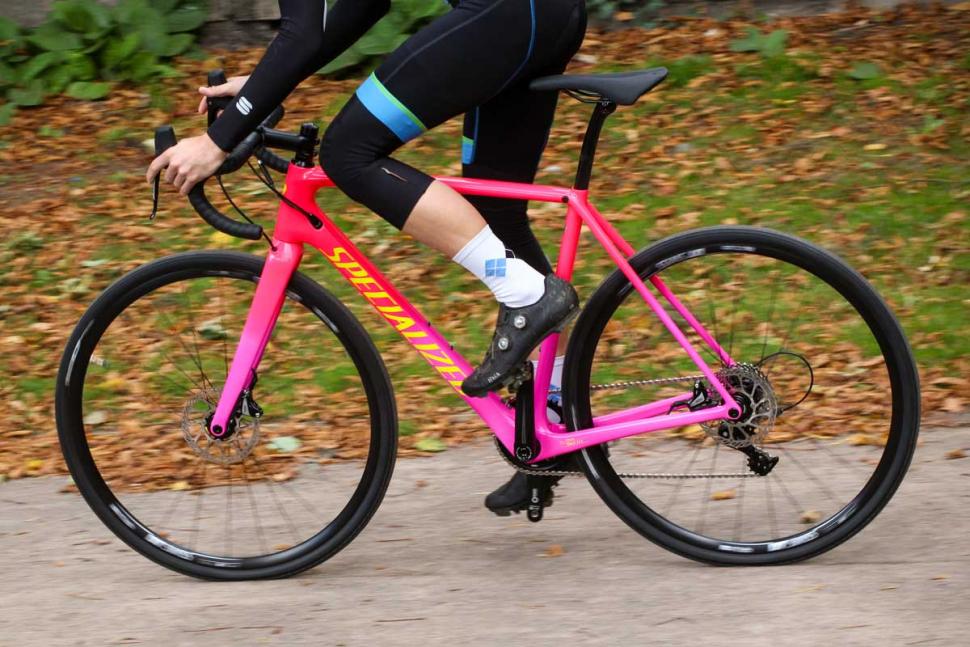



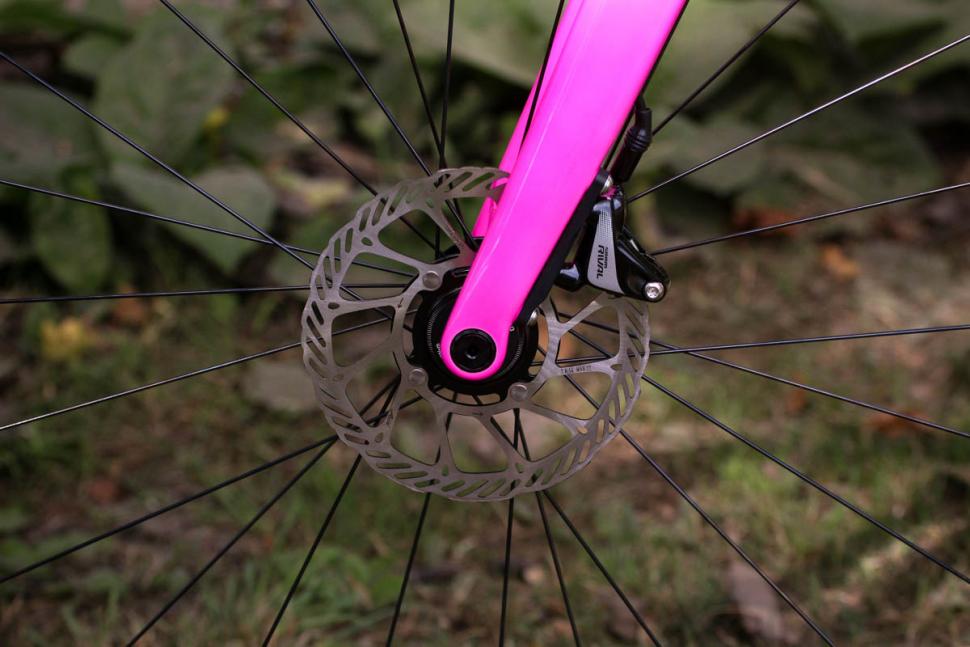
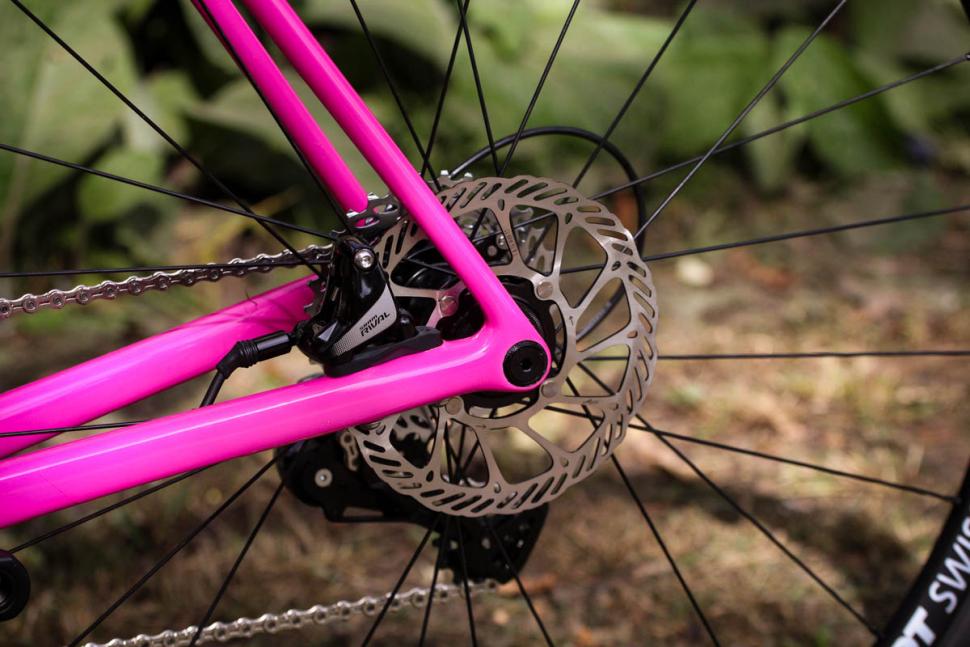


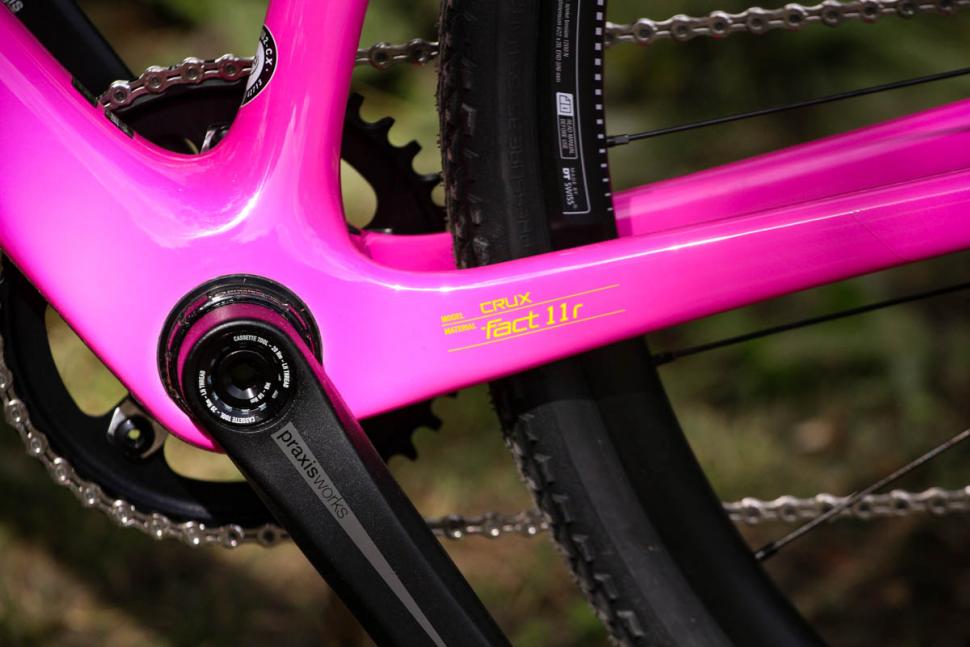

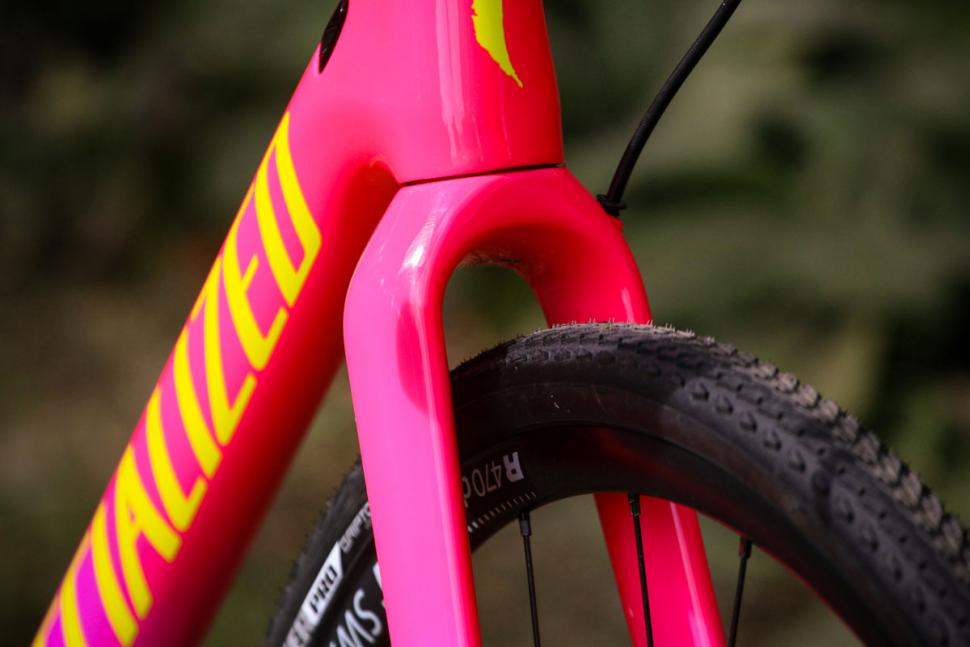
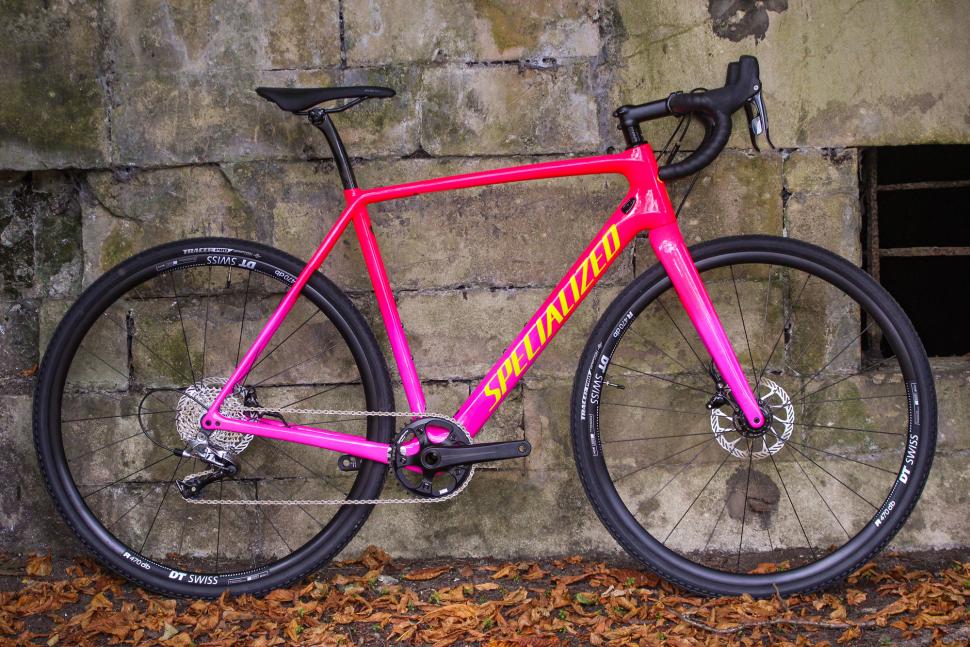
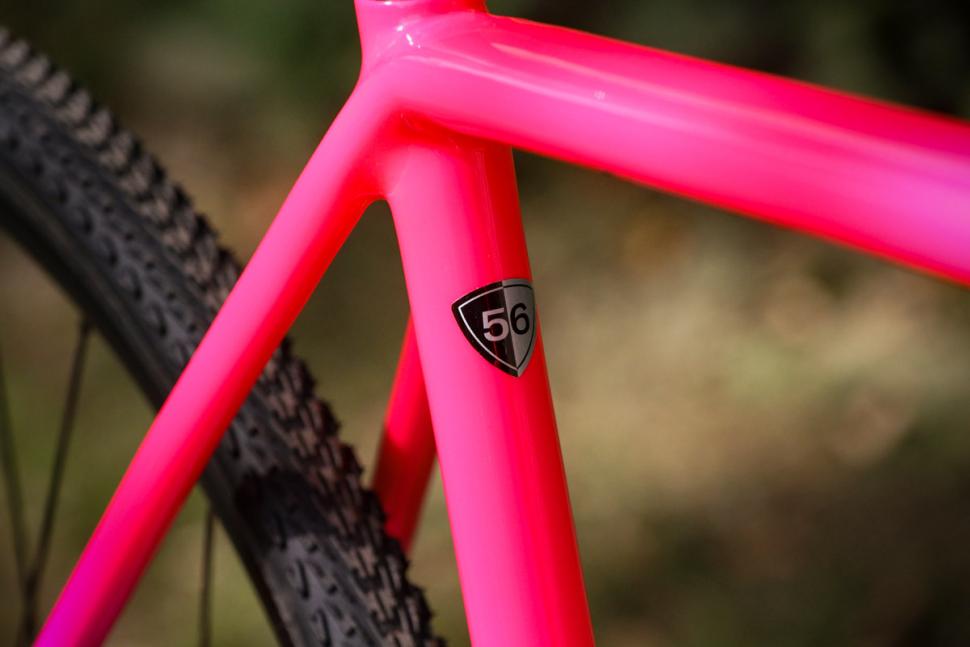

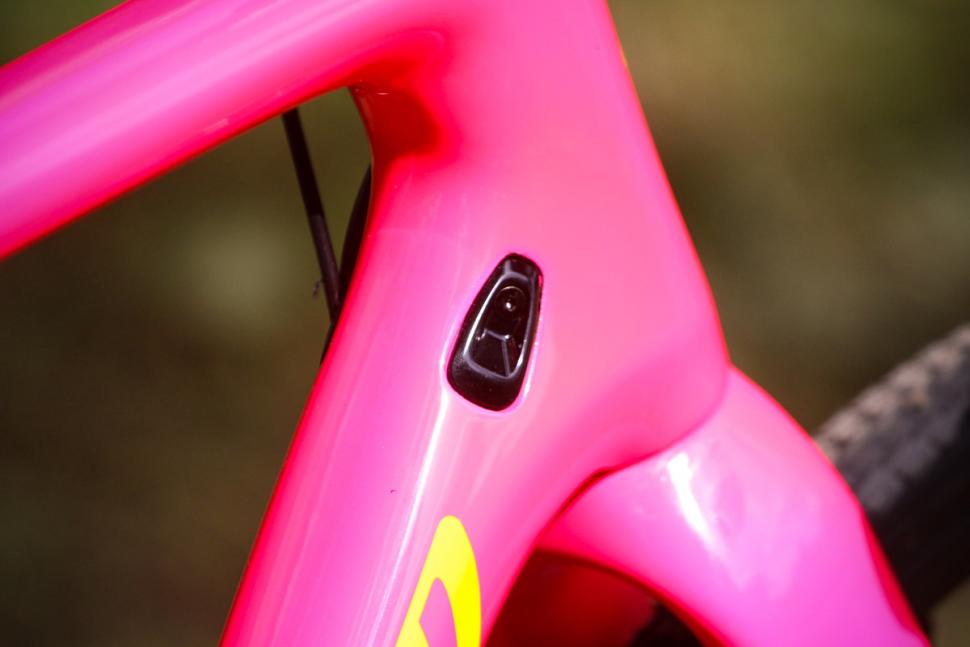

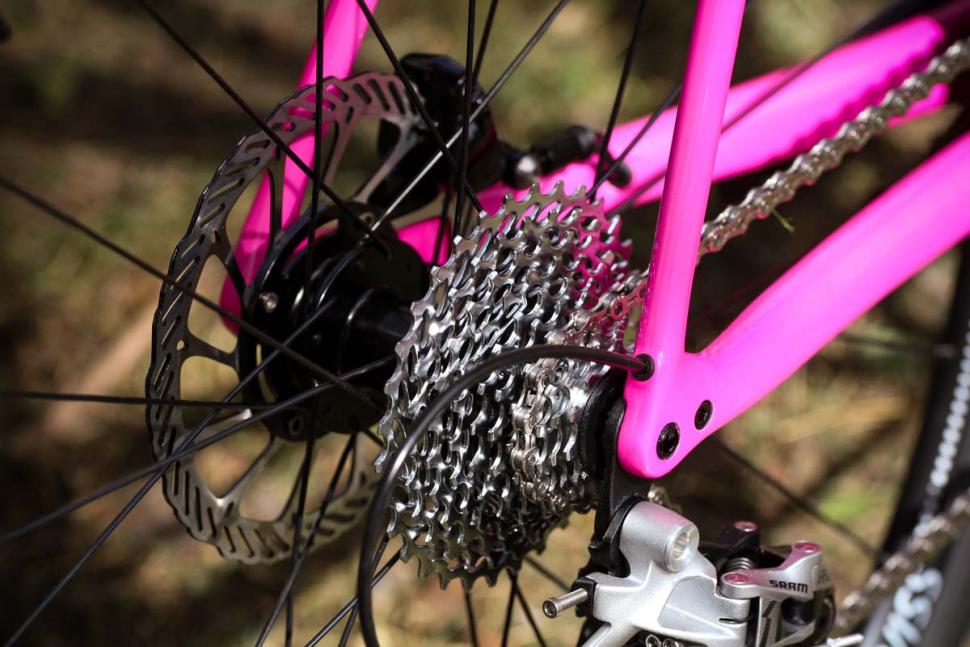



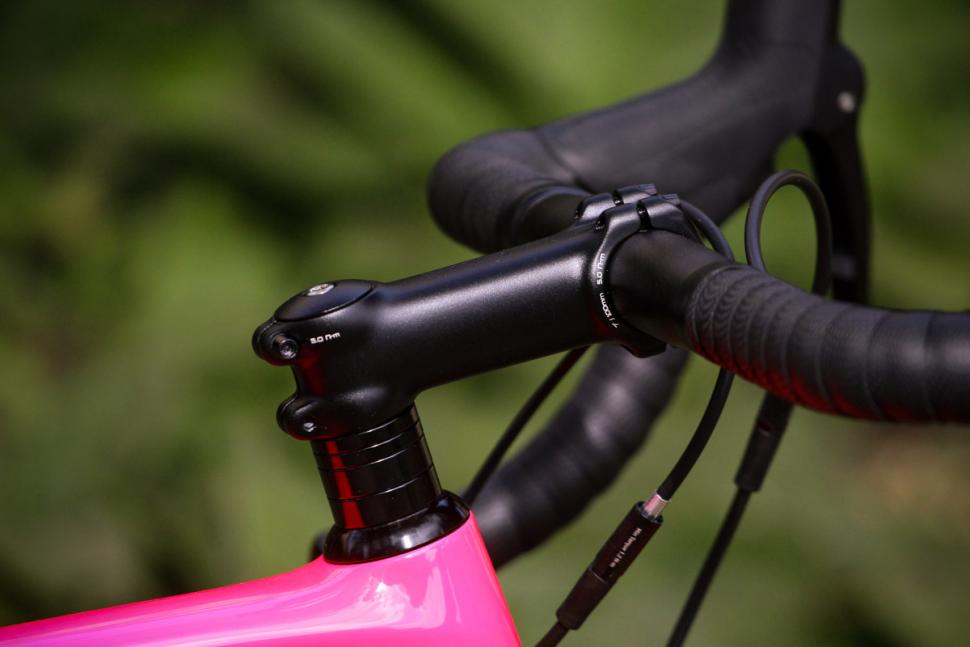
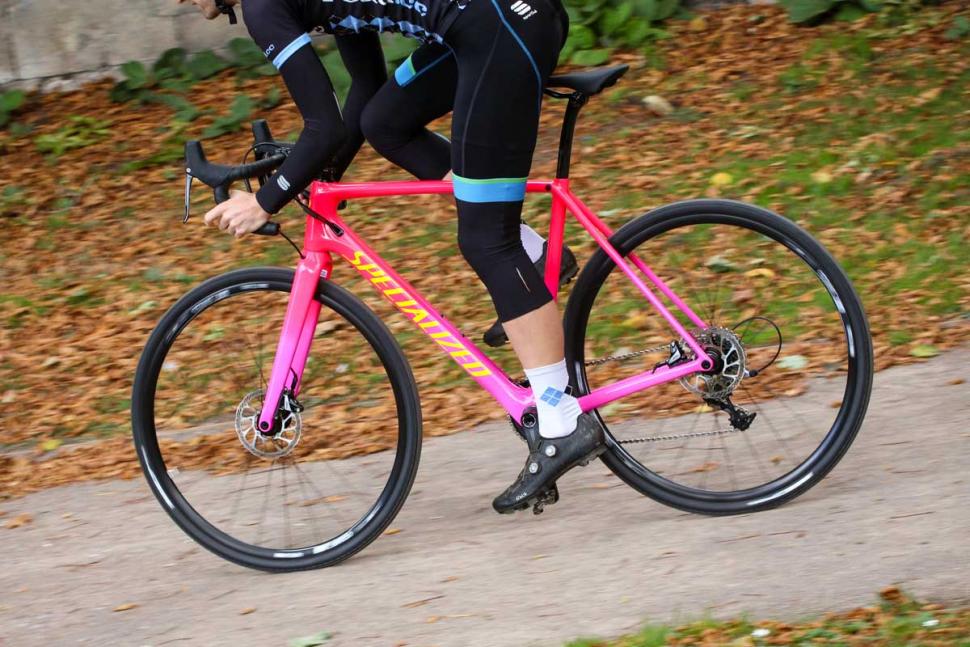
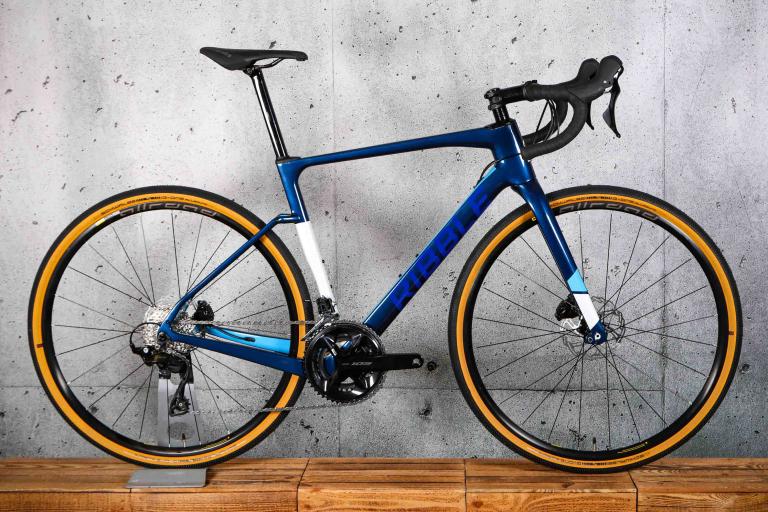
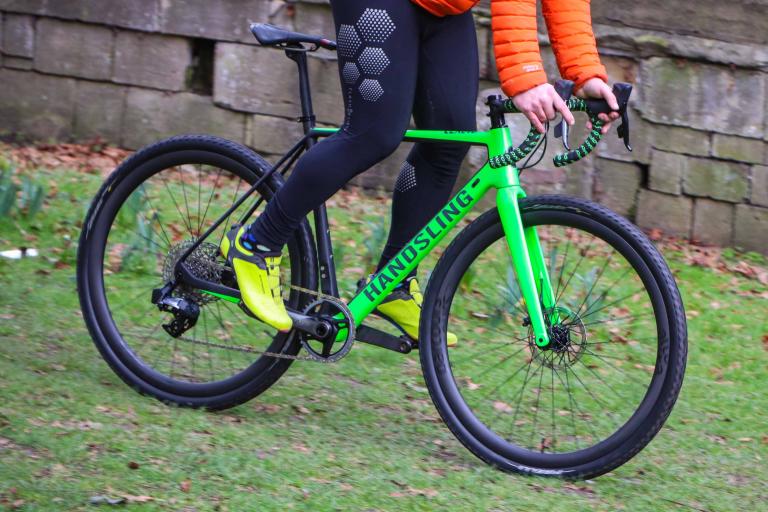

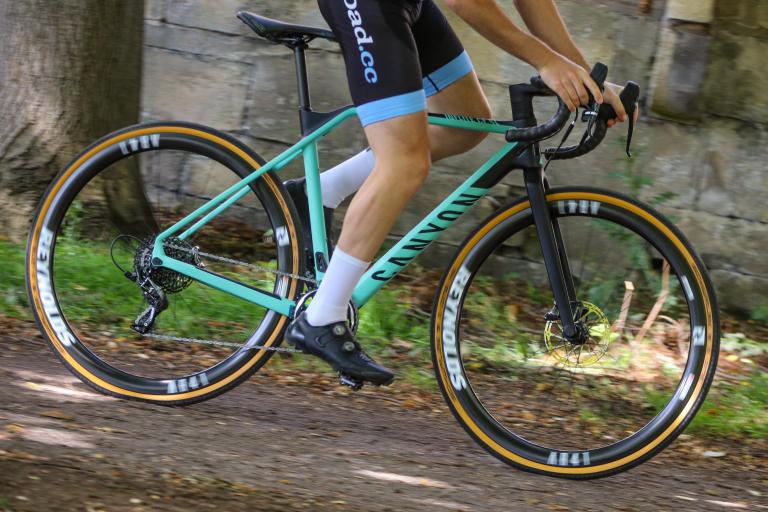
Add new comment
5 comments
I've got the 2018 version of this with the Roval wheels on order, Hoping its just as good.
Paint is just so hot it’s worth the price alone.
There are expensive. Very expensive for the spec, but just soo fast. I road my friends recently when my TCX died mid race and it is on another level for responsiveness.
Tempted in the inevitable Evans sale to buy one.
Wonderful paint job. Loving the pink.
An alternative option is the Giant TCX Advnced Pro 2.
A similar weight with SRAM Rival, but sells at £2300. Superb CX race bike, with the only negative being the heavy (bombproof) stock wheels. Swap them out for some lightweight tub wheels, and you have a very light, responsive and fast bike.